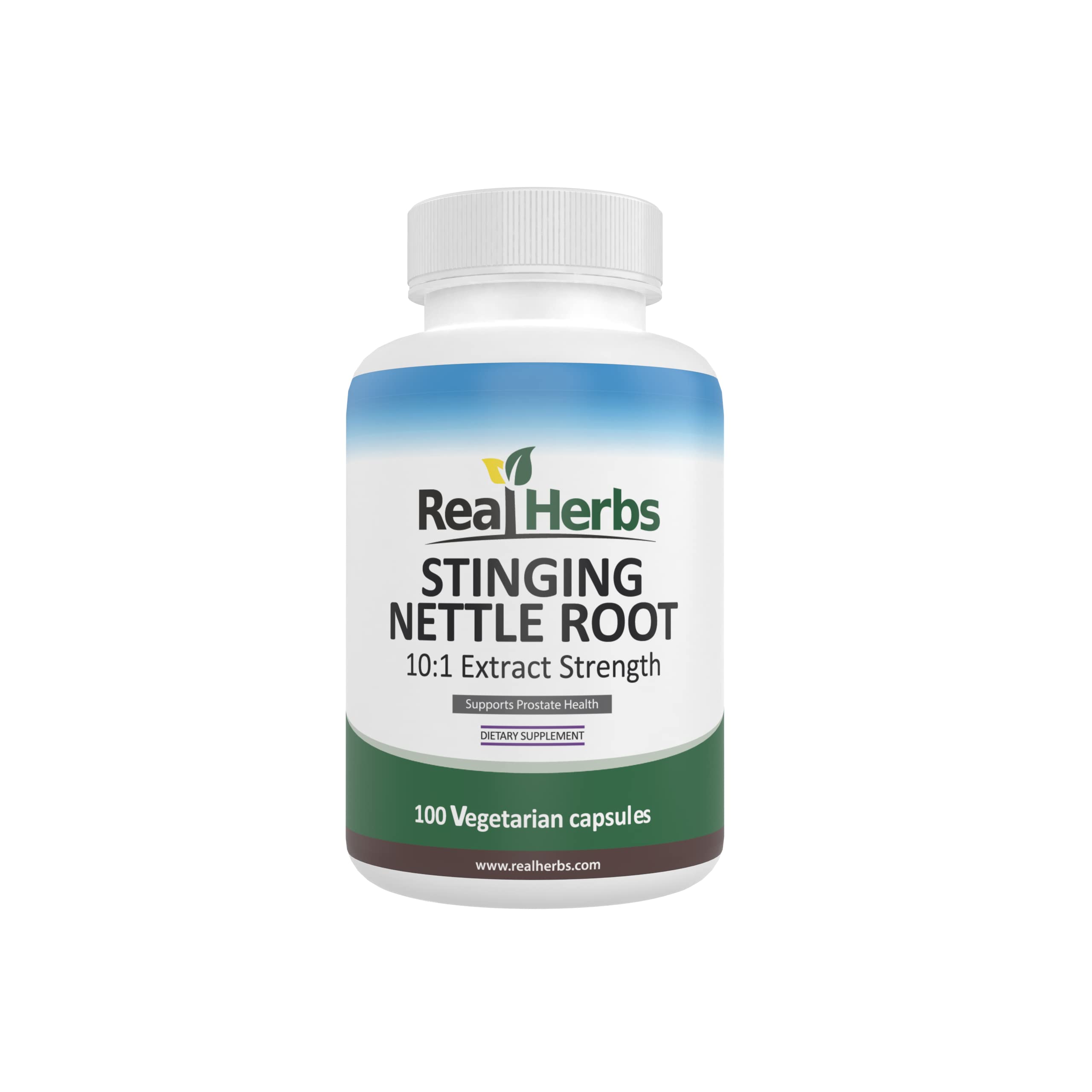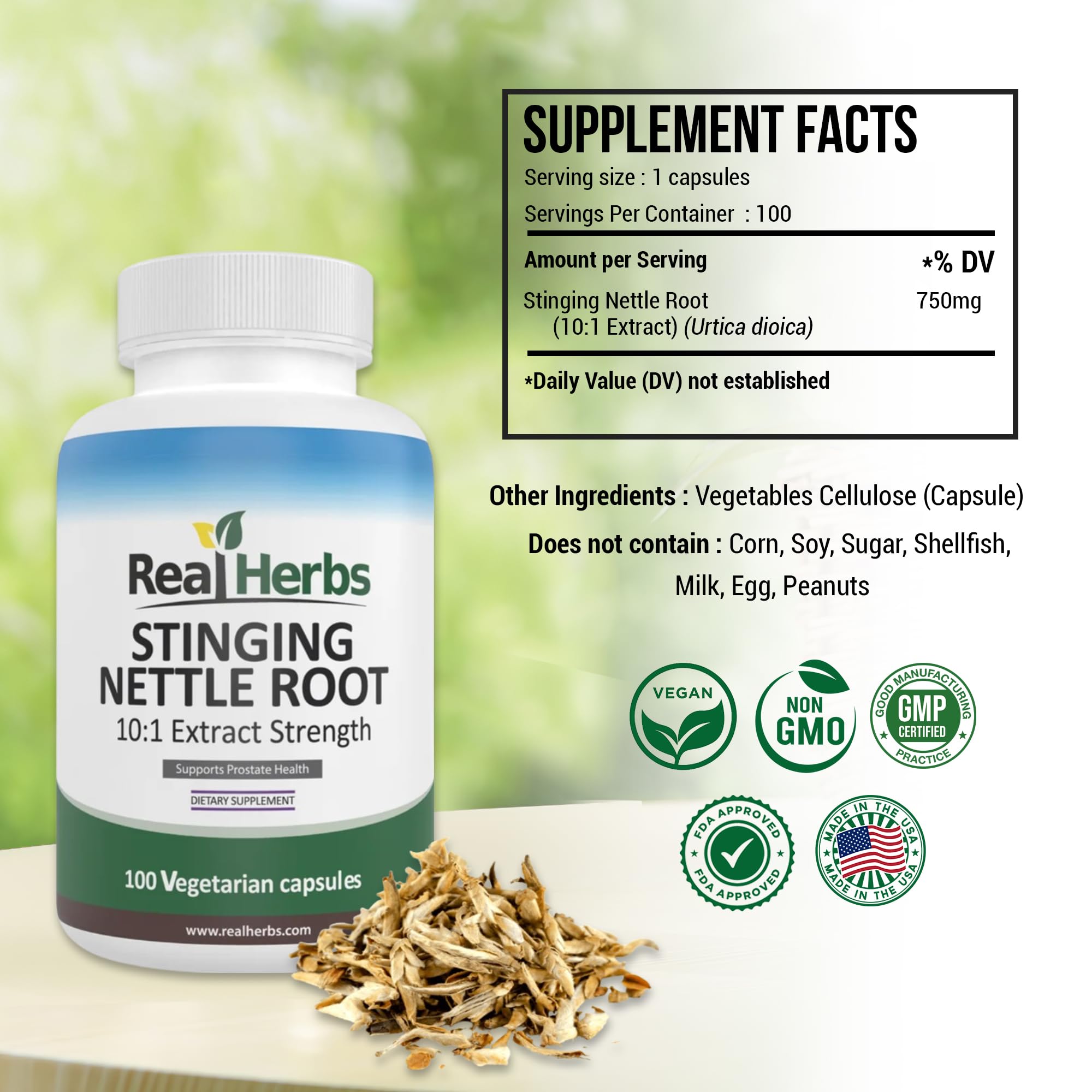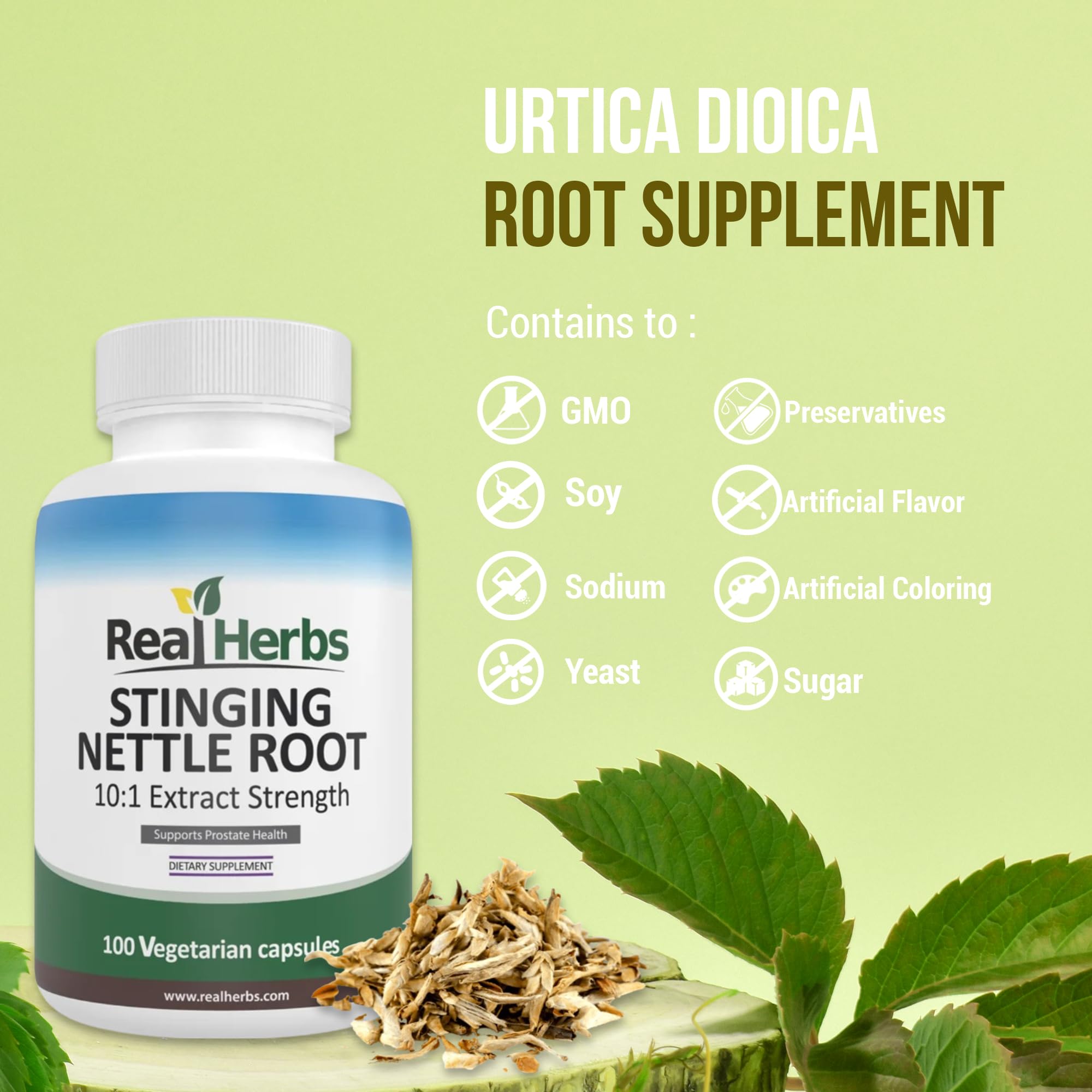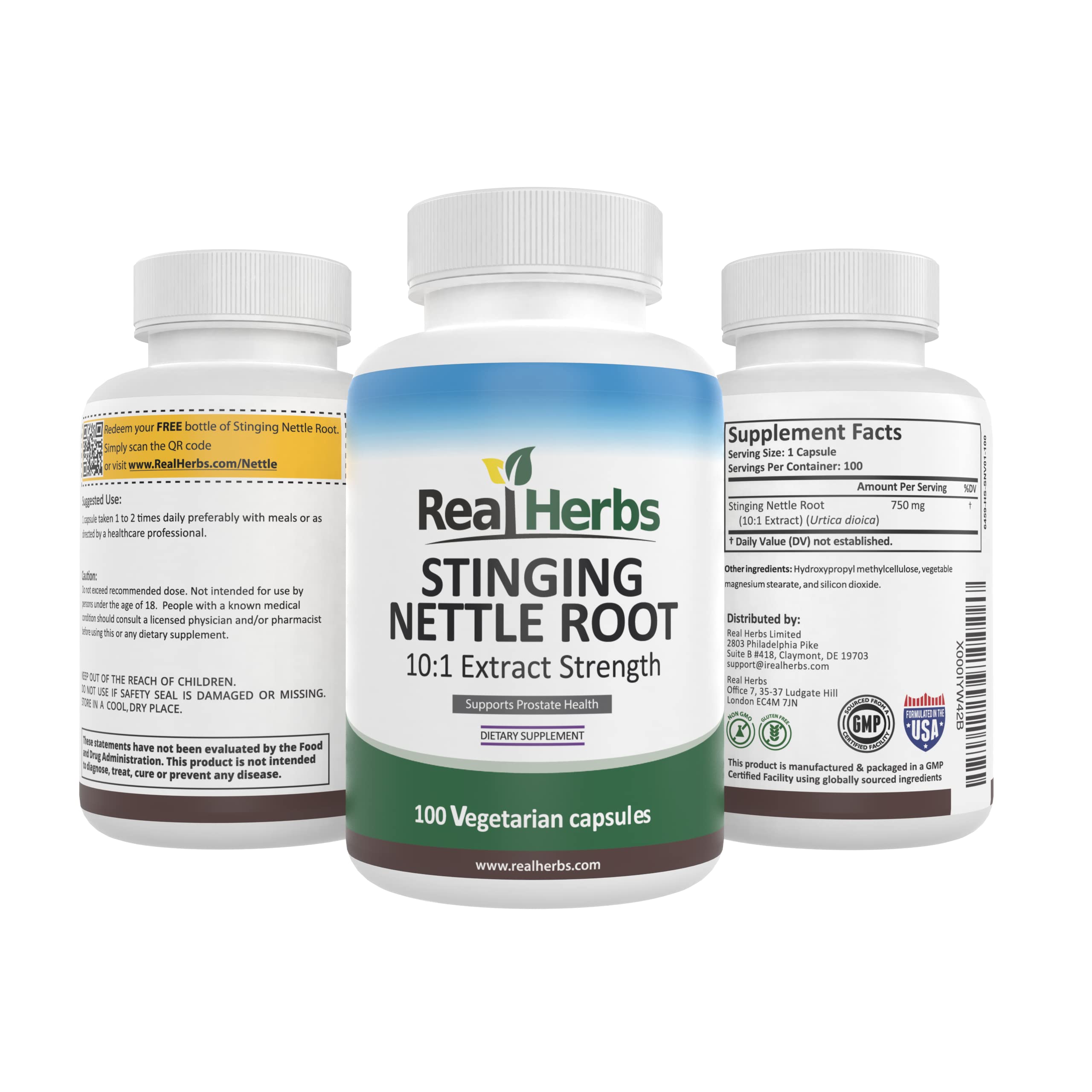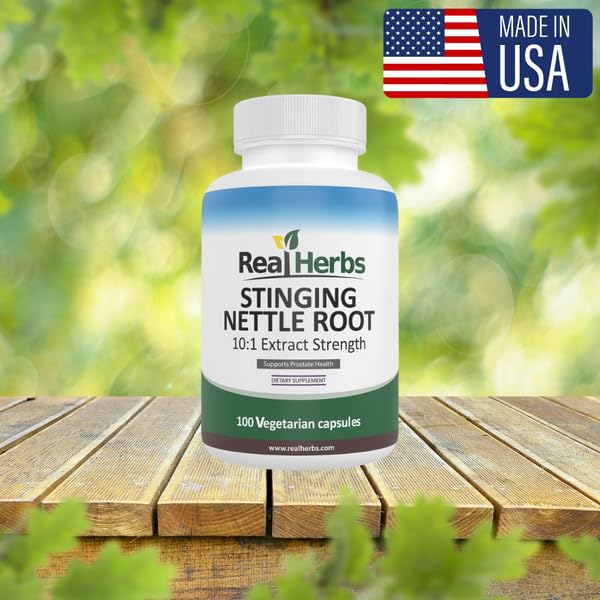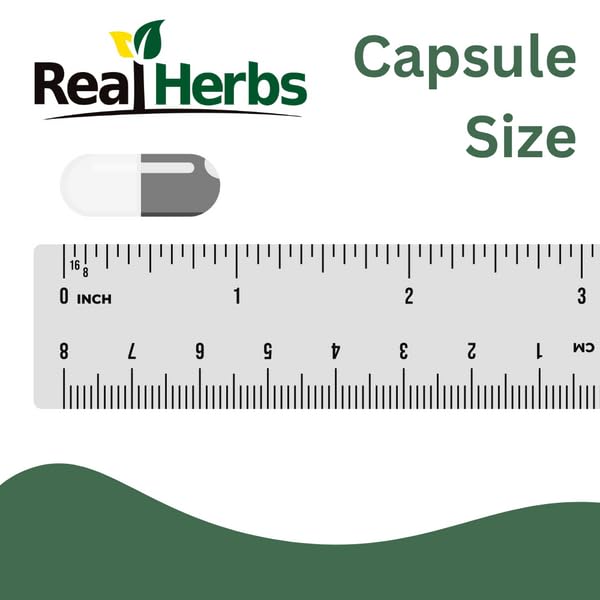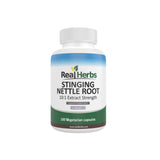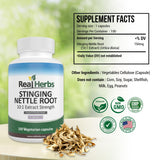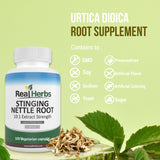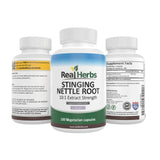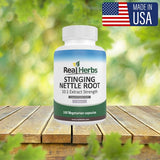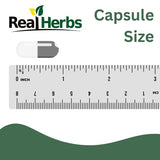Stinging Nettle Root Supplements: A Buyer's Guide
Stinging Nettle Root Supplements: A Buyer's Guide
Key factors to consider when choosing the best extract for prostate health and hormonal balance.
Why Quality Matters in Nettle Root Supplementation
The efficacy of Stinging Nettle Root (*Urtica dioica*) for targeted health concerns like Benign Prostatic Hyperplasia (BPH) and hormonal support is directly tied to the concentration and composition of the product [4]. The root contains a complex mixture of compounds, including lignans, phytosterols, and polysaccharides [2, 8]. Effective supplementation requires an extract that has maximized the presence of these crucial bioactive components, which are often challenging to isolate from the raw plant material [2]. A high-quality product ensures you receive the same therapeutic dose used in successful clinical trials [5, 6].
This guide provides a structured checklist of key factors to evaluate when purchasing stinging nettle root supplements.

1. Extraction and Form: The Gold Standard
The most important factor is how the active ingredients were separated from the raw root. Crude powdered root is generally less effective than a concentrated extract.
- Look for "Extract": The most scientifically backed products contain a concentrated root extract, typically achieved using alcohol (methanol or ethanol) as the solvent [4]. This process pulls out the highly effective lipophilic (fat-soluble) components—especially the sterols and lignans—that modulate hormone-binding proteins and prostate tissue growth [7, 3].
- Avoid: Products labeled only as "Raw Powdered Root," "Dried Root," or "Tea Cut." While nutritious, these forms generally do not contain the necessary concentration of therapeutic compounds for specific conditions like BPH [1, 4].
- Preferred Format: Standardized capsules or tablets are the format most consistently used in clinical trials demonstrating efficacy in improving urinary flow and BPH symptoms [5].
2. Standardization and Potency
Standardization is the pharmaceutical term for ensuring a consistent, measurable amount of the active ingredient in every dose. This is essential for predictable results.
- Look for DER (Drug-Extract Ratio): Check the label for a ratio like "10:1 extract" or "20:1 extract." This means 10 or 20 parts of raw root were used to create 1 part of the finished extract, indicating high concentration [4].
- Daily Dosage: Ensure the recommended daily dosage falls within the range studied in BPH trials: 300 mg to 600 mg of standardized extract per day [4].
- Targeted Compounds: Some advanced supplements specify the percentage of marker compounds (e.g., 0.8% Beta-Sitosterol). While not strictly mandatory, this indicates a high level of analytical quality control [8].
3. Sourcing and Purity
The purity of the raw botanical material and the manufacturing process directly impact the final product's safety and efficacy.
- Single Ingredient Focus: For targeted benefits, choose supplements where Stinging Nettle Root is the primary or only active ingredient. Many BPH remedies combine nettle with Saw Palmetto; ensure the label clearly states the dose of each component [1].
- Third-Party Testing: Look for evidence of testing for contaminants such as heavy metals, pesticides, and microbial load. Although often overlooked, lab testing confirms that the extract is clean and safe [10].
- Root vs. Leaf: Confirm the product is made exclusively from the ROOT (*Urtica dioica radix*) if your goal is BPH or hormonal support. The leaf has a different chemical profile and is generally used for allergies and general nutrition [2, 9].
4. Safety and Transparency
- Manufacturer Reputation: Choose brands that provide full transparency regarding their sourcing, extraction methods, and manufacturing facilities (e.g., GMP certified).
- Expiration Date: Always check the best-by date to ensure the product retains its full potency.
- Non-GMO / Organic: While not required for efficacy, choosing non-GMO or organic products can reduce potential exposure to herbicides and pesticides, ensuring a cleaner supplement [10].
Important Safety Note: When evaluating dosage, remember that Nettle Root interacts with hormones and may affect blood pressure. Always consult a healthcare professional, especially if you have an underlying medical condition or are taking prescription medications.
Conclusion: Making an Informed Investment
Purchasing Stinging Nettle Root should be seen as an investment in long-term prostate and hormonal health. By prioritizing products that clearly state they contain a high-concentration root extract, adhering to clinically validated standardization ratios, and confirming the overall purity of the ingredients, you ensure you are taking the most effective form of this powerful traditional remedy.
Choose a Supplement Aligned with Clinical Research
Real Herbs Stinging Nettle Root Extract is a concentrated, high-potency supplement formulated to deliver the effective dose used in clinical trials for BPH and hormonal support.
Who it helps: Men seeking a research-backed supplement for long-term prostate health, improved urinary flow, and balanced hormonal function.
Why it’s trusted: We specify our extract ratio and focus exclusively on the potent root components to guarantee the efficacy and safety profiles expected by consumers.
Your investment is protected by our 100-Day Money-Back Guarantee!
"The concentration in this extract is exactly what my research said was necessary for BPH support. Highly recommend." - Michael V.
"I trust this brand because they clearly label the extract ratio, unlike others I've tried." - Robert L.
Disclaimer: The information provided in this article is for educational purposes only and is not intended as medical advice. Always consult with a qualified healthcare professional before making any decisions about your health or starting any new supplement regimen.
Scientific Credibility & Citations
- Martz F, Kankaanpää S. Stinging Nettle (Urtica dioica) Roots: The Power Underground—A Review. *Plants (Basel)*. 2025. PMC11768490 (Root Extraction/Phytochemistry)
- Bhusal KK, Magar SK, et al. Nutritional and pharmacological importance of stinging nettle (Urtica dioica L.): A review. *Heliyon*. 2022. PMID: 35800714 (Nutritional/Pharmacological Overview)
- Tarasevičienė Ž, Vitkauskaitė M, et al. Wild Stinging Nettle (Urtica dioica L.) Leaves and Roots Chemical Composition and Bioactivity. *Plants (Basel)*. 2023. PMC9864842 (Root vs. Leaf Composition)
- Chrubasik JE, Roufogalis BD, Wagner H, Chrubasik S. A comprehensive review on the stinging nettle effect and efficacy profiles. Part II: urticae radix. *Phytomedicine*. 2007. PMID: 17509841 (Review of Root Extracts/Dosage)
- Ghorbanibirgani A, Khalili A, Zamani L. The Efficacy of Stinging Nettle (Urtica dioica) in Patients with Benign Prostatic Hyperplasia: A Randomized Double-Blind Study. *Iran Red Cres Med J*. 2013. PMC3589769 (BPH Clinical Trial/Dosage)
- Safarinejad MR. Urtica dioica for treatment of benign prostatic hyperplasia: a prospective, randomized, double-blind, placebo-controlled, crossover study. *J Herb Pharmacother*. 2005. PMID: 16635963 (BPH Clinical Trial/Extract Use)
- Hirano T, Homma M, Oka K. Effects of stinging nettle root extracts and their steroidal components on the Na+,K(+)-ATPase of the benign prostatic hyperplasia. *Planta Med*. 1994. PMID: 7510891 (Steroidal Component Mechanism)
- Đurović S, Živković J, et al. Chemical Constituents of Stinging Nettle (Urtica dioica L.). *Molecules*. 2024. PMC10970493 (Chemical Analysis)
- NLM Bookshelf. Stinging Nettle. *LiverTox*. 2023. PMID: 37011125 (Safety Overview)
- Chrubasik JE, Roufogalis BD, Wagner H, Chrubasik S. A comprehensive review on the stinging nettle effect and efficacy. *Phytomedicine*. 2007. PMID: 17493795 (Efficacy and Safety Review)
```

